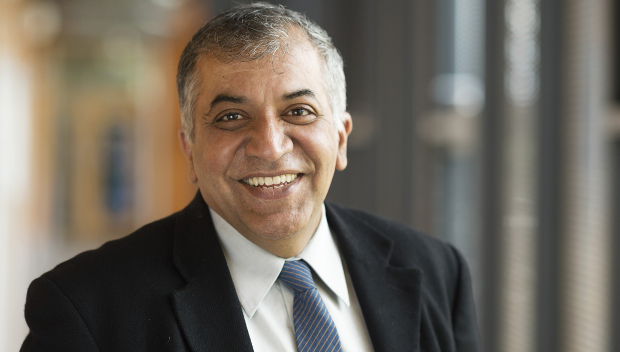Researchers at NUI Galway-based Curam will partner with five other European institutions to develop new advanced therapies and technologies in skin regeneration for the treatment of burns and chronic wounds.
The €4 million NanoGrowSkin project will involve a multidisciplinary healthcare approach to develop an improved chronic wound therapy. The goal of this project is to develop a bioengineered human skin substitute, improving the manufacturing process, shortening the production time, and enhancing its treatment effectiveness.
Until now, different types of artificial skin covers have been designed, although none of them has successfully reproduced the accurate structure and functions of the native human skin. Moreover, they can also present some disadvantages, such as a high bacterial infection risk, low biological activity and low regenerative effectiveness.
“The skin is the main protective barrier the body has against any external attack. Any skin disease or injury needs to be treated immediately,” said Curam director and research lead Prof Abhay Pandit.
“The most common conditions are wounds, pressure ulcers and burns, and current treatments based on the use of skin grafts, or even on implanting skin originating from a donor, are associated with several problems. In this project we will be investigating the development of a bioengineered human skin substitute that would be a suitable option for treating patients.”
The first milestone of the NanoGrowSkin project will be the optimisation of human artificial skin models by using pharmaceutical-quality products and nanomedicine technologies.
The second aim of NanoGrowSkin will be to adapt the production of these new tools towards an optimal regulatory framework, including Good Manufacturing Practice regulation and European Medicines Agency guidelines.
Finally, the project will include the development of a market access approach in order to estimate the benefits of this treatment for the entire society. The envisaged model will include the calculation of cost per patient as well as potential cost-savings and/or cost-effective measures for the affordable introduction of the tissue-engineered treatment.
Bone deep
Researchers from AMBER have developed a new biomaterial which is capable of both regenerating tissues which respond to electrical stimuli (such as the nerves, spinal cord, heart, brain and muscles) as well as eliminating infection – an ever-growing problem in hospitals. This could enable enhanced recovery for heart attack and burn patients.
This new material could help to improve quality of life for heart attack survivors, as scar tissue build-up can decrease heart function. An electroconductive biomaterial could bypass damaged regions of the heart and restore functional activity.
For people with extensive nerve damage, there are currently very limited options in terms of repairing nerve injuries extending beyond two centimetres. However, by combining a biomaterial with proven regenerative capacity, like collagen, with a material that can carry an electrical stimulus, it may be possible to transmit electrical signals across damaged tissue, resulting in functional restoration of the affected area. This concept may also have potential in regenerative capabilities of the spinal cord and other areas including the brain.
The new material developed by the multidisciplinary research team is composed of collagen and graphene resulting in an electroconductive ‘biohybrid’ combining the beneficial properties of both materials – resulting in a material which is mechanically stronger, with increased electrical conductivity.
This ‘biohybrid’ material has been shown to enhance cell growth and, when electrical stimulation is applied, directs cardiac cells to respond and align in the direction of the electrical impulse. Furthermore, the material prevents bacterial attachment, a hugely favourable characteristic which can be applied in the development of next generation antimicrobial medical devices. The surface roughness of the material, induced by the introduction of graphene, causes bacterial walls to be burst while simultaneously allowing the heart cells to multiply and grow.
Prof Fergal O’Brien, Head of the Tissue Engineering Research Group (TERG) in the Dept of Anatomy in RCSI, Deputy Director of AMBER and lead Investigator on the project, said: “Many cells and tissues in the body are responsive to electrical stimulation but electroconductive materials are limited because they may kill cells or cause infection. Despite progress in biomaterials science for some applications, there has been limited success in treating tissues of the heart and nervous system. There are currently no solutions for very large nerve defects and large areas of heart wall damage.
“We are very excited by the potential of this material for cardiac applications but the capacity of the material to deliver physiological electrical stimuli while limiting infection suggests it might have potential in a number of other indications such as repairing damaged peripheral nerves or perhaps even spinal cord. The technology also has potential applications where external devices such as biosensors and devices might interface with the body.
“This type of collaborative research is only possible in a centre like AMBER where leading researchers from different disciplines get to share ideas and work in partnership together.”
TechCentral Reporters








Subscribers 0
Fans 0
Followers 0
Followers